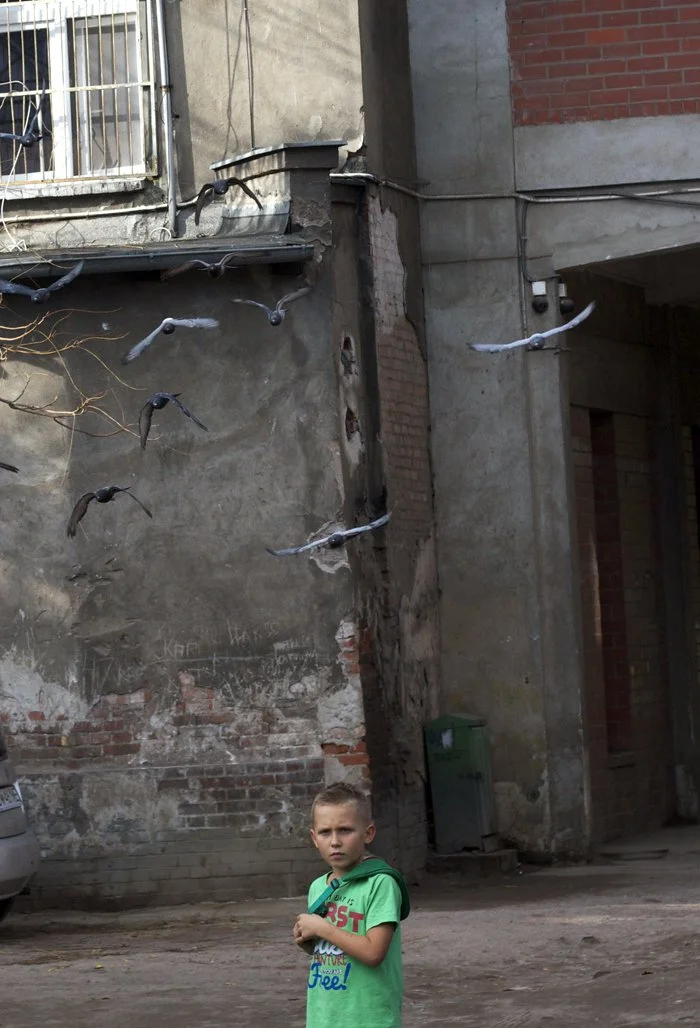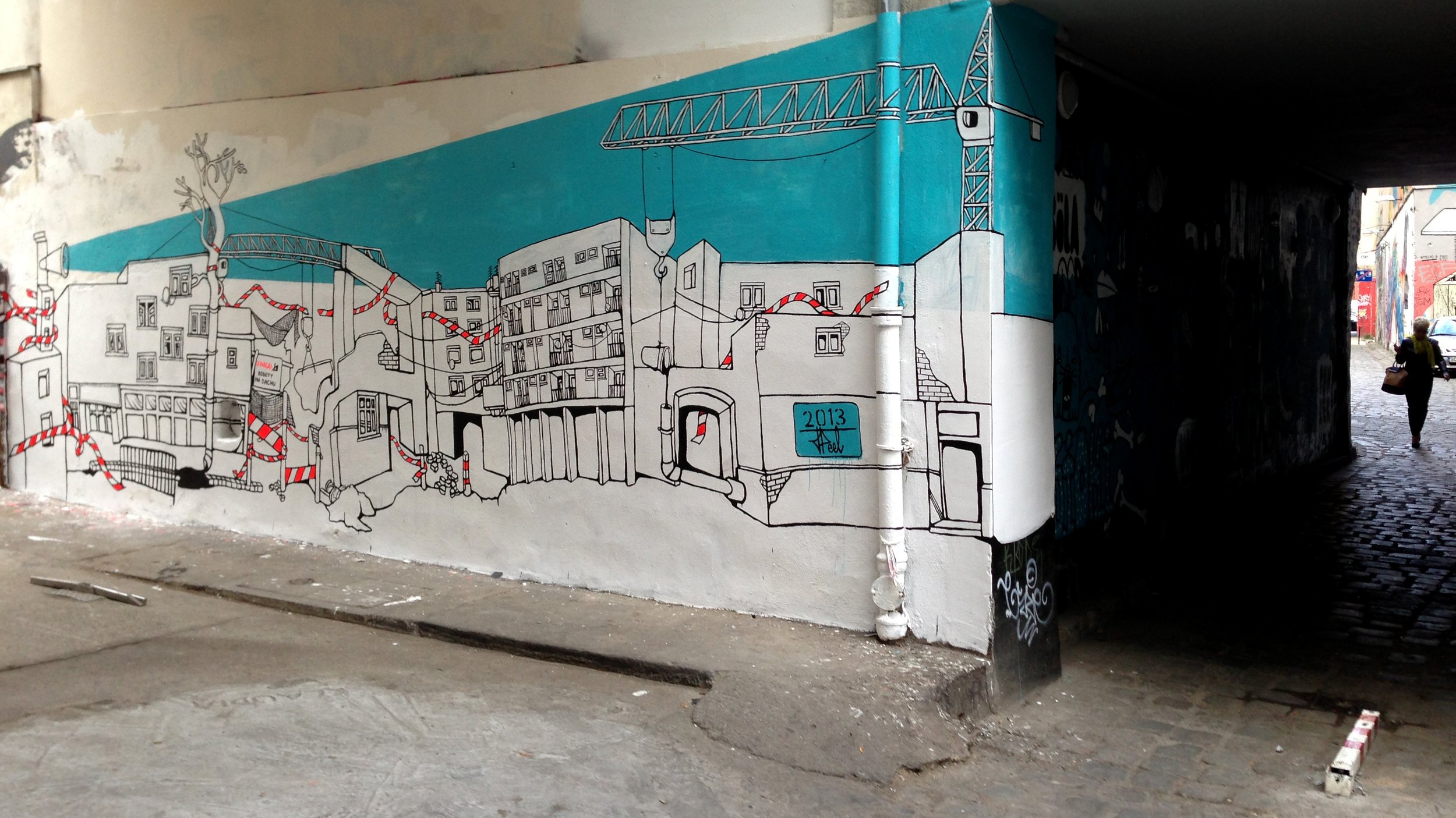
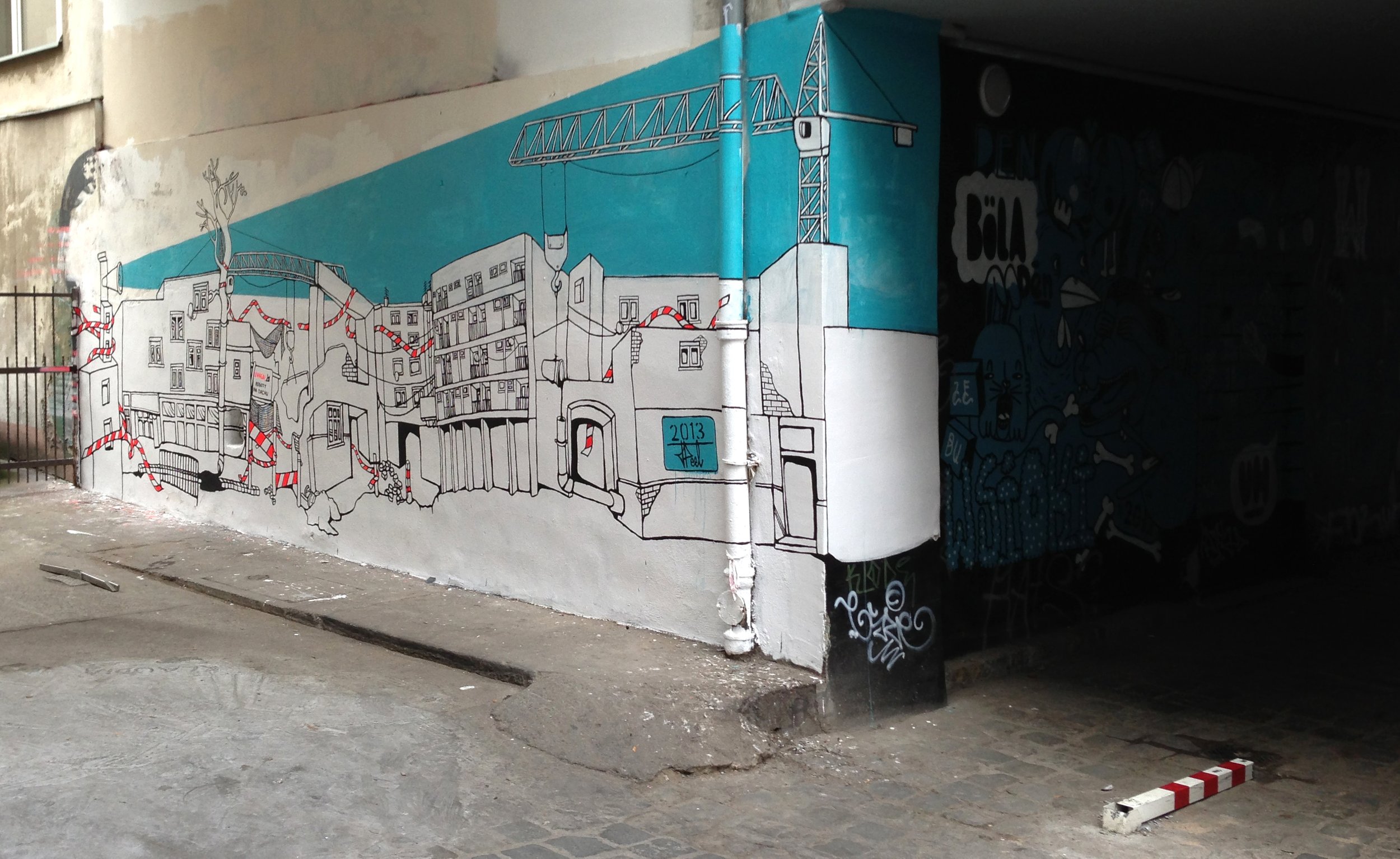
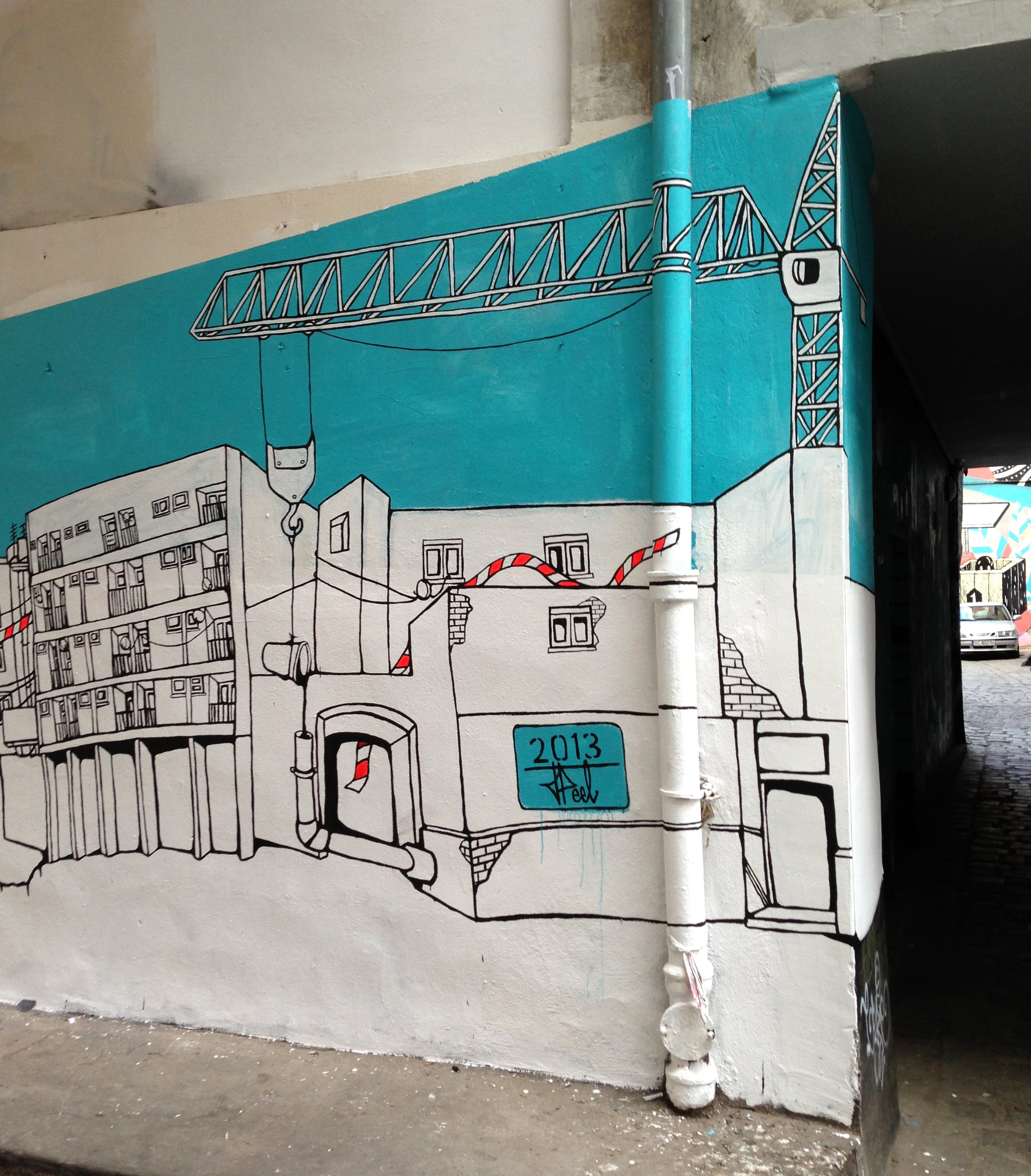
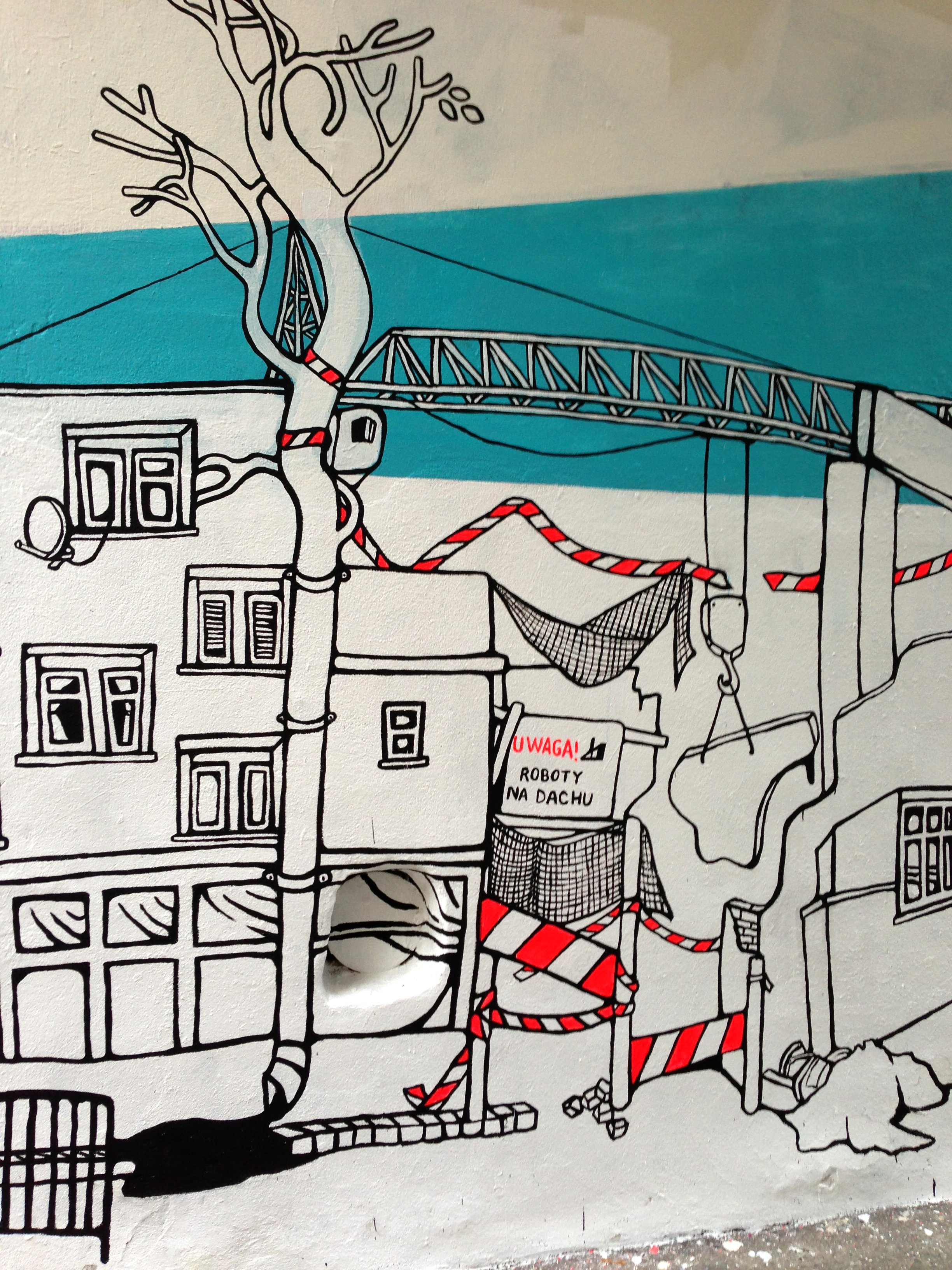
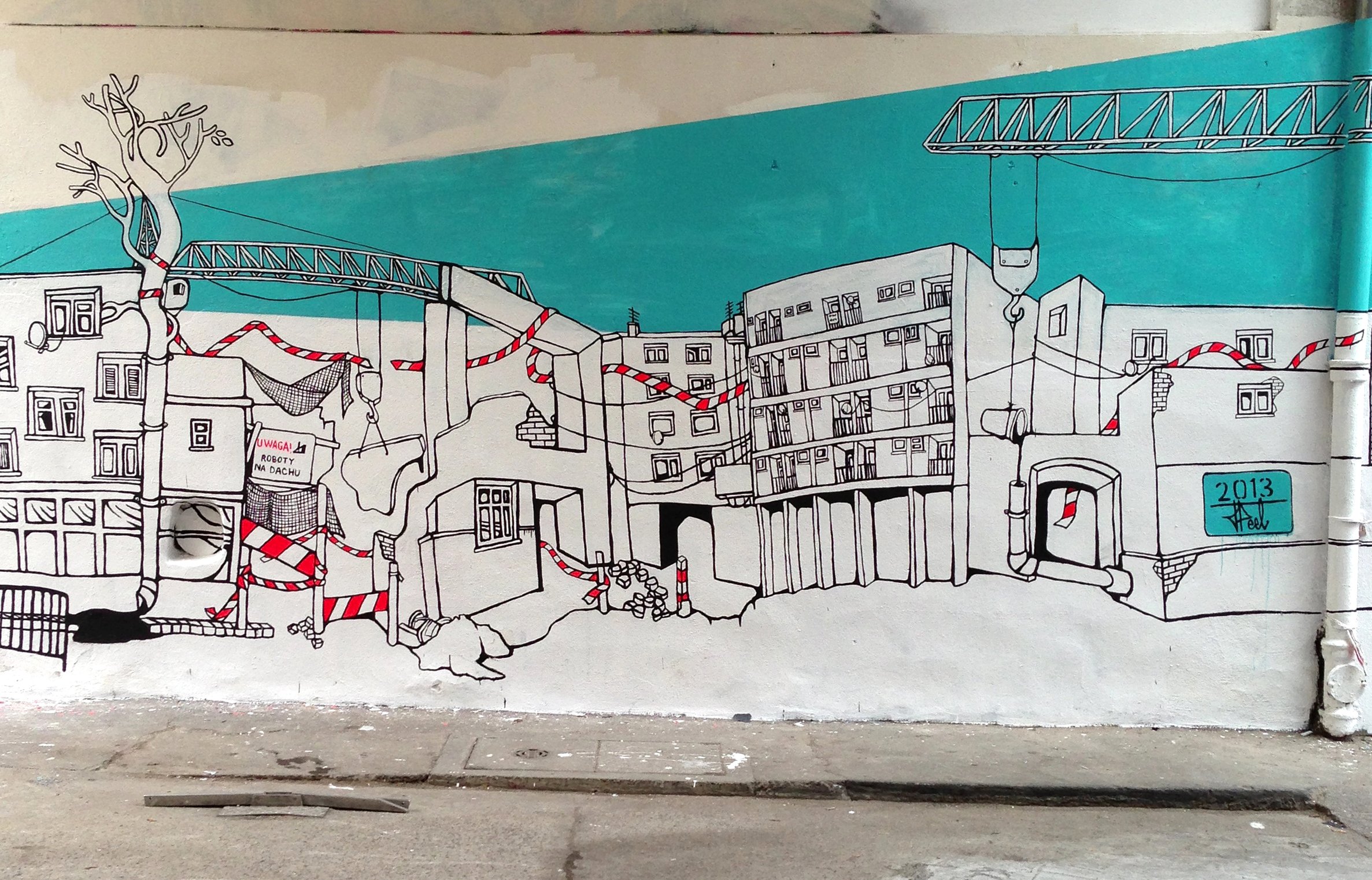

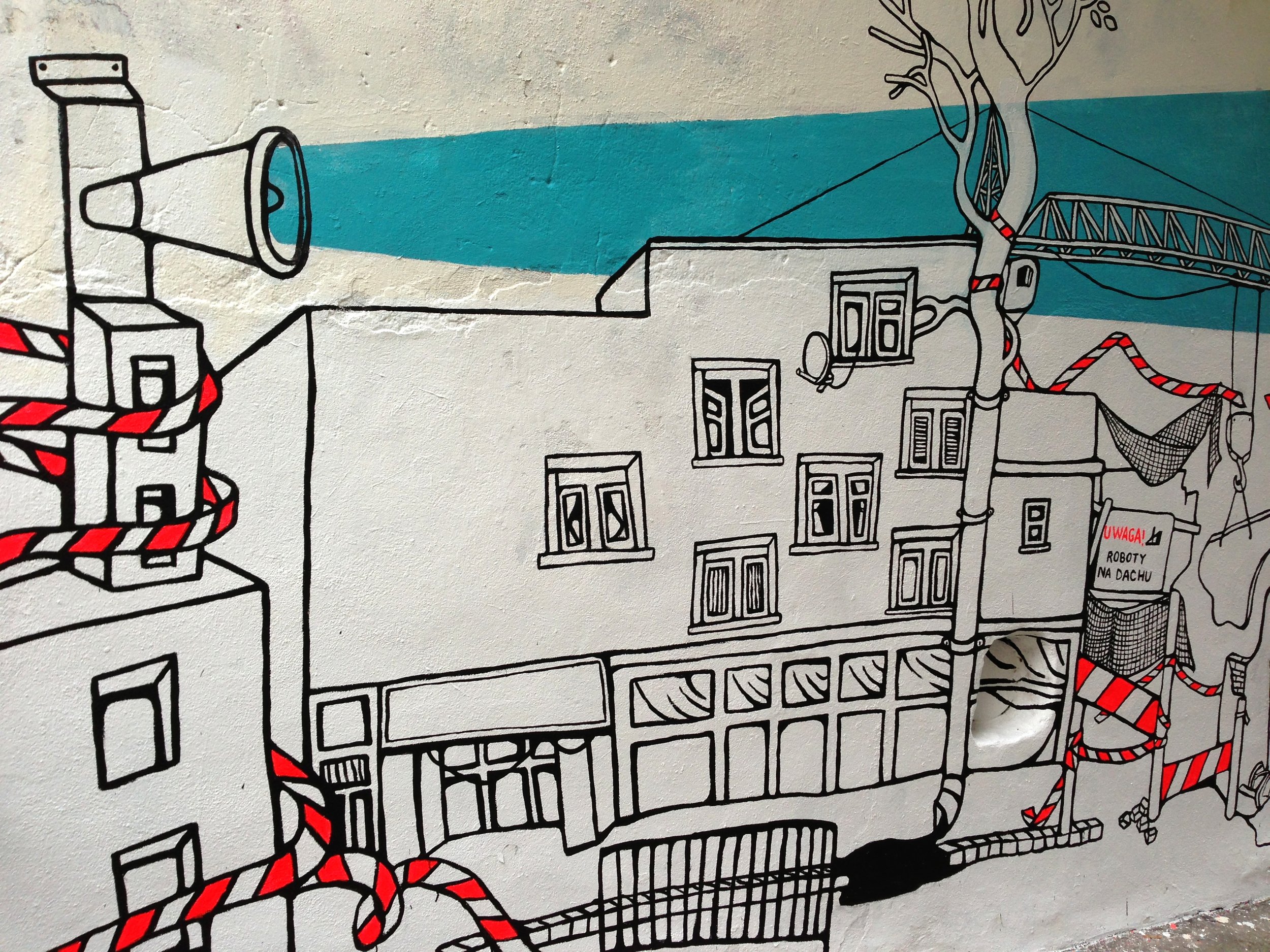

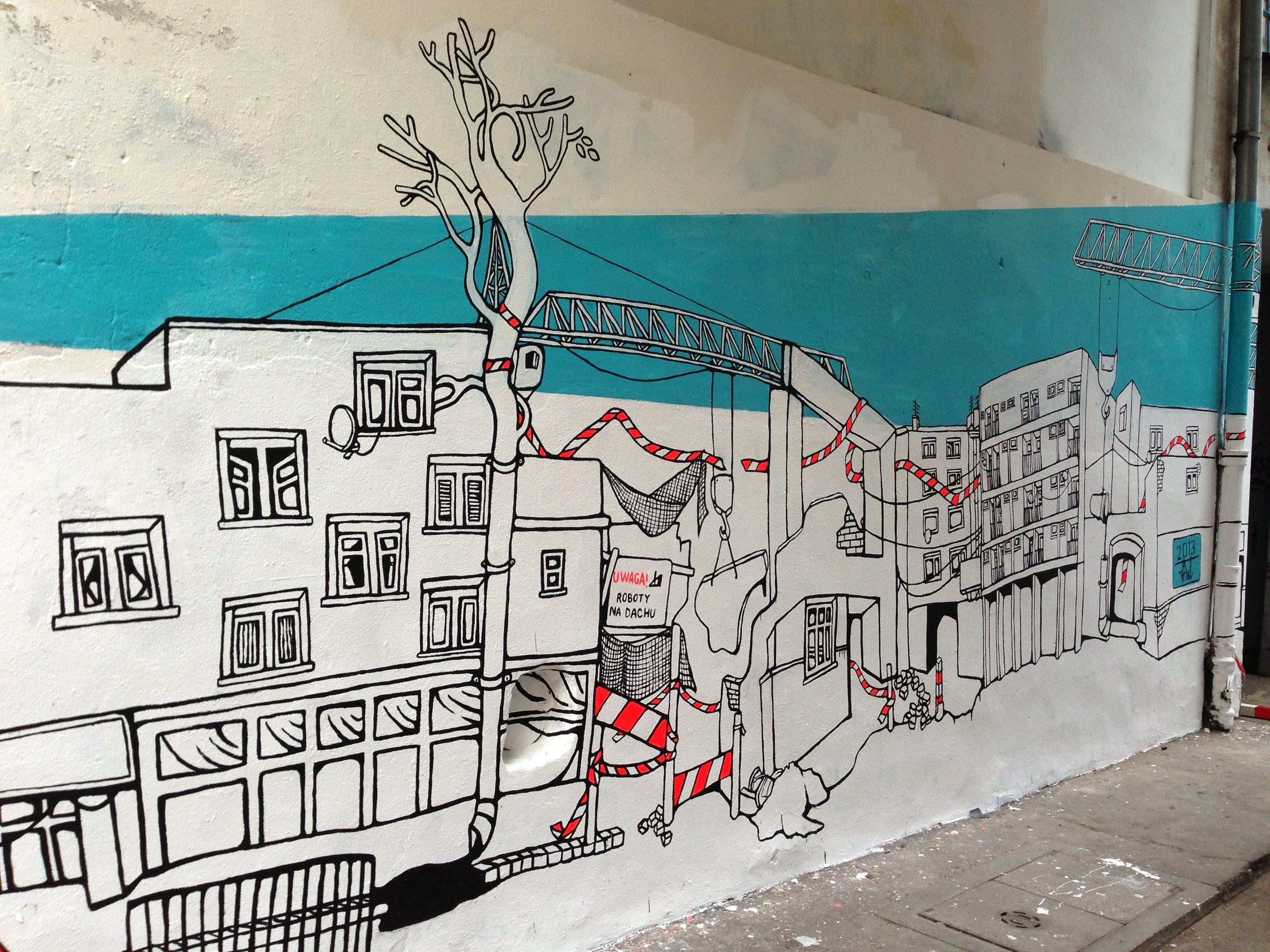
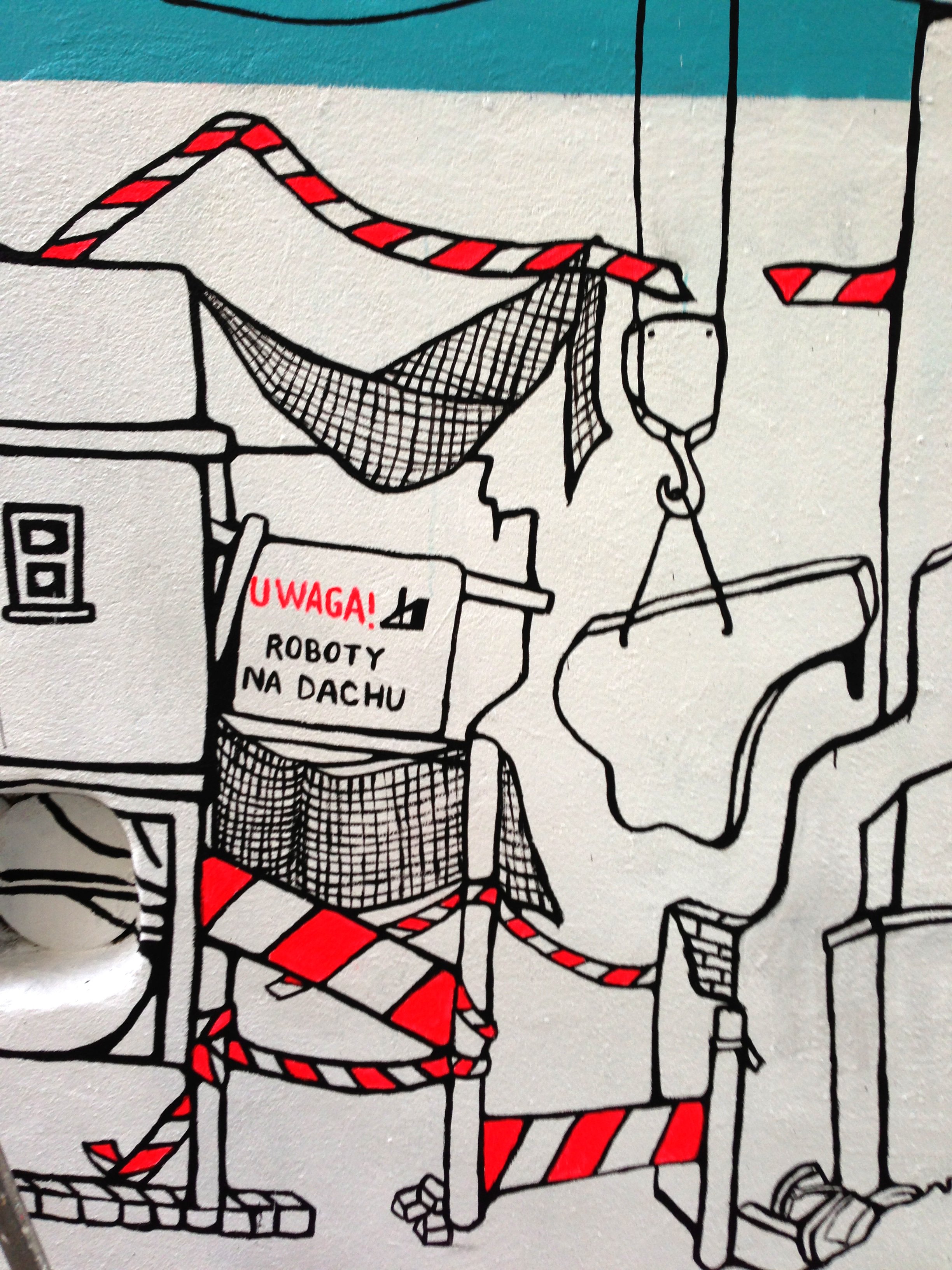
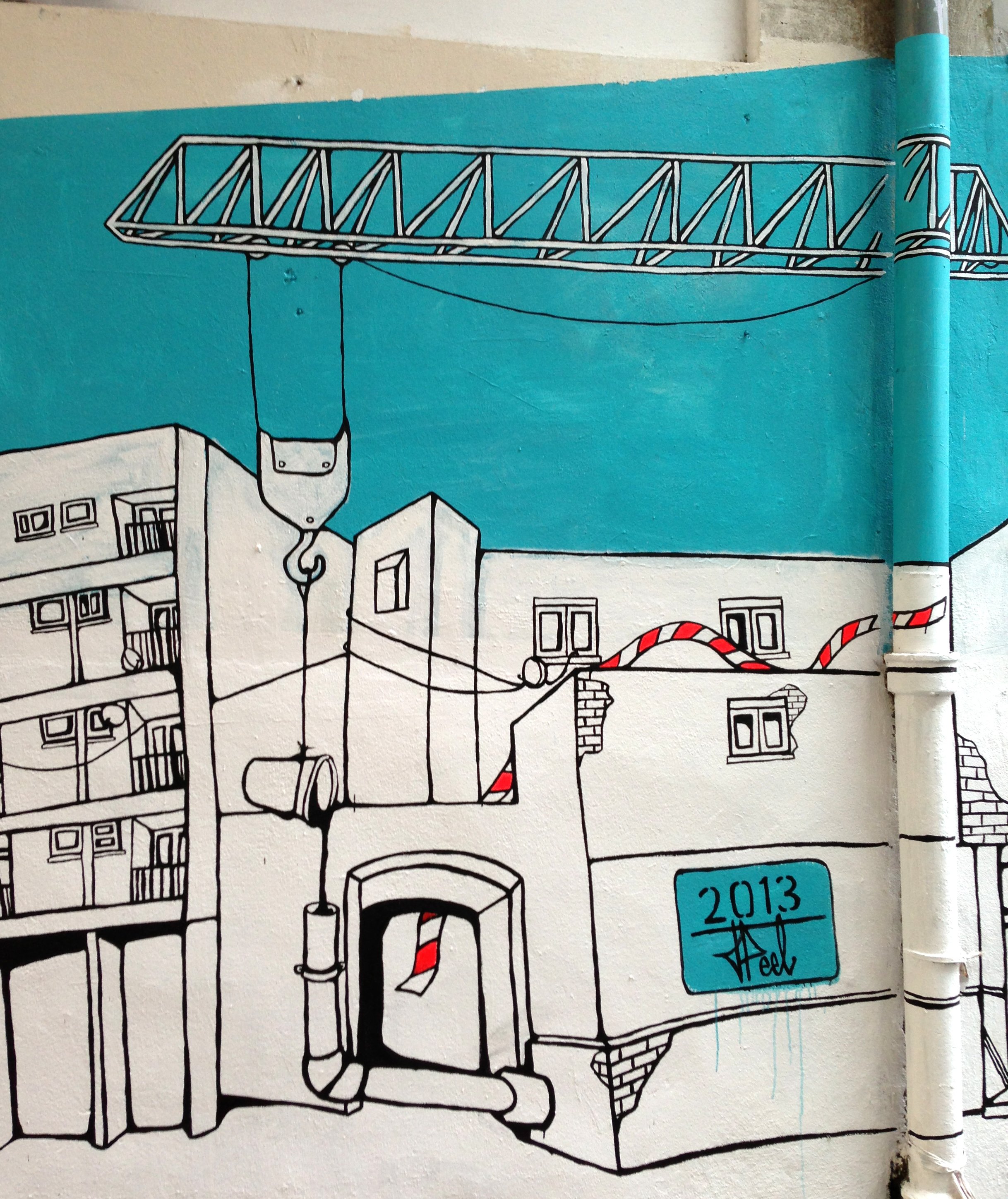
Wraclaw, Poland
(2013)
Selected by The Canals Project for their residency programme with The Legacy List and Bloomberg, I took a trip to Wroclaw in Poland with curator Cedar Lewisohn. I was introduced to the lovely team at BWA Wroclaw and created a mural as well as a small publication on the residency. Below is the interview transcribed from that publication.
Cedar Lewisohn—Hello Jo Peel
Jo Peel- Hello Cedar
CL- thanks for speaking to me. Can you first tell me why you wanted to apply to the Canals Project
residency?
JP-I have been fascinated with Poland for ages. I took myself to Lodz in the Spring, and was really interested in documenting it visually. So I the residency was a really good way of putting my energy into a project.
CL- Where does your fascination come from?
JP- I just find it a really interesting place in terms of the communist regime and the war and the second world war, which is all relatively recent in political terms. Things are changing so much. It’s a place that in fifty years will be as homogenised as the rest of Europe. Right now it feels like it’s in the middle of that process, so it’s really interesting to see these juxtapositions. These huge tenement buildings left over from communism with a McDonald’s at the bottom.
CL- So---
JP- Definitely. I really like the people- there is a similar sort of attitude, I guess coming from the North of England, it’s the same sort of thing. People are quite real and a little bit brutal. I like that.
CL- I guess the history of place affects the peoples humour. The Polish humour seems very dry. But what was good, though conversations we had when we were in Wroclaw, that you talked a lot more about the political side of your work, is that reflected in this dream project you want to do, visiting all these places which used to produce Steel?
JP- Yeah, I think it is. I’ve been thinking about it for years. I love the idea of visiting Steel cities across the world and documenting them. Coming from a place with a big industrial past...
CL- You’re from Sheffield...
JP- Yeah, it’s a steel city, but most of the industry was destroyed during Thatcherism and the de-industrialisation of Britain. I’m fascinated by what was built up and what’s left over from that past and how that affects the present. So visiting places around the world that have been through that process would be really interesting.
CL-Does that link with your interest in communism in and landscapes in Poland as well?
JP-Yeah, it all linked to the way people react to their environment, which is really central to my work.
I guess I find it hard to articulate, which is why I’m an artist, not a writer! It very subtle, I never try to shout about what I’m trying to do with my work. I like the idea that people come to things by accident, rather than having thing forced on them. It’s that idea of every building telling a story, so you can’t be interested in architecture without thinking of the meaning behind it and the whole political ideology that went into its making.
CL-That’s very true. Even looking at the materials that building are built from, whether it sandstone, concrete or granite tells a story as well. Where does the money come from which built those buildings?
JP- The way people evolve around the buildings as well. The fuel of the city, the jobs, the way that people work.
CL –so what did you find useful about the residency?
JP- One the really useful things was just having a period of time to spend drawing. For it to be something I was allowed to do. It’s not often that you have the privilege to explore visually the world around you. I make art for a living, but there’s always something else I need to be doing. So it was nice to just have that time.
CL-Did you start introducing figures into the works..
JP- I always like drawing people, but I’m not very good at pointing the camera in people’s faces.
CL- You seemed quite good at stalking people in Poland..
JP- Long lenses... but I often feel I don’t want to take people’s photos too much unless I talk to them. I feel like I’m taking too much from them by putting them in a drawing. But then, if I talk to them, then it changes how they behave, and it’s hard to capture that moment, where they are just being ordinary.
CL- Did you find the people that you were drawing in Poland had a different type of body language or anything like that?
JP- I guess in a way I was hunting out people who fit idea of what I wanted to find, so it was mainly these old guys, in brown and gray. With their ill fitting jeans and you know...
CL- Like a typical idea of an ex-communist guy...
JP- Yeah, but I found them quite easily... Its fact, but leaning toward the facts you wants to find.
CL- And what about the photo’s you taken as well. Would you hold them equal to the drawings, or are they a side thing...
JP- I’ve always taken photos in order to draw. In Poland I was also drawing from real life, because I had more time. That was something really nice about being out there, I could sit on a bench and draw away, and it didn’t really bother me too much. Whereas at home, I do find it a bit... it’s nice sometimes when people ask you (what you are doing), and you meet some really interesting people. But you also feel so on show.
CL- The communist retro bar was probably our favourite place to hang out. We had a few favourites.
JP- The pierogi was amazing…

